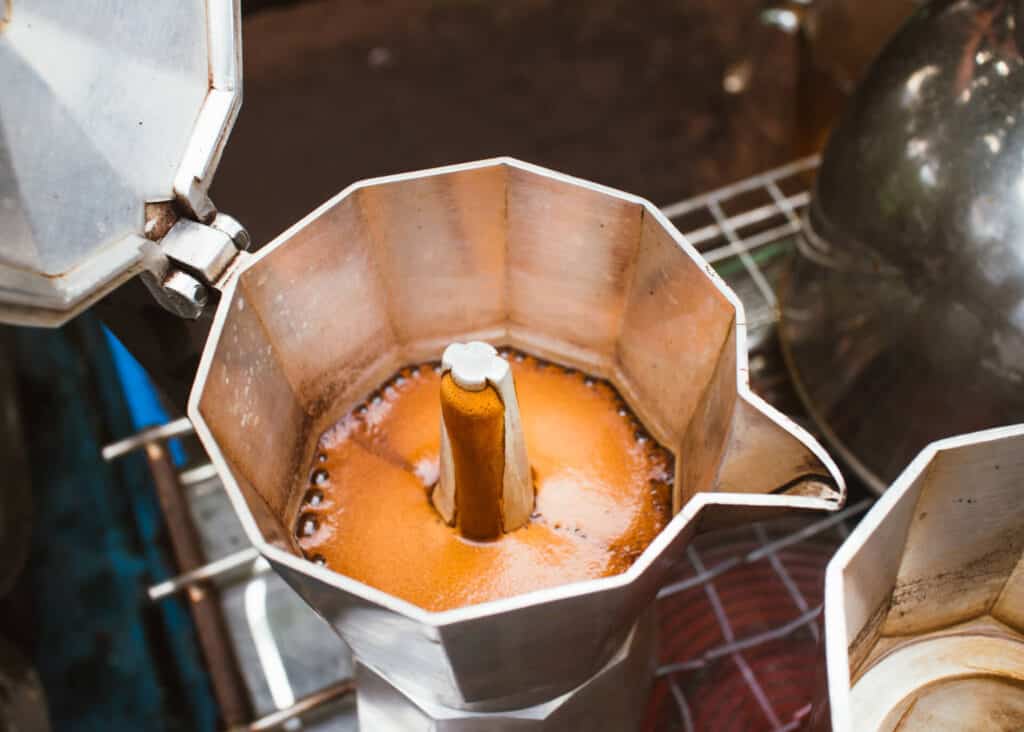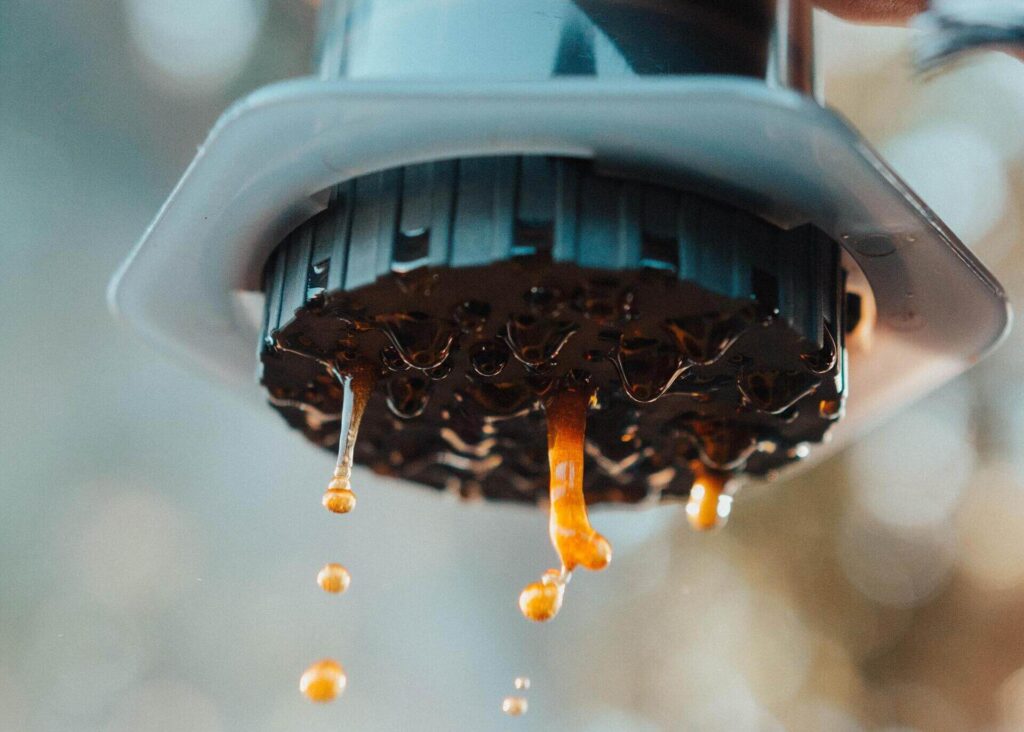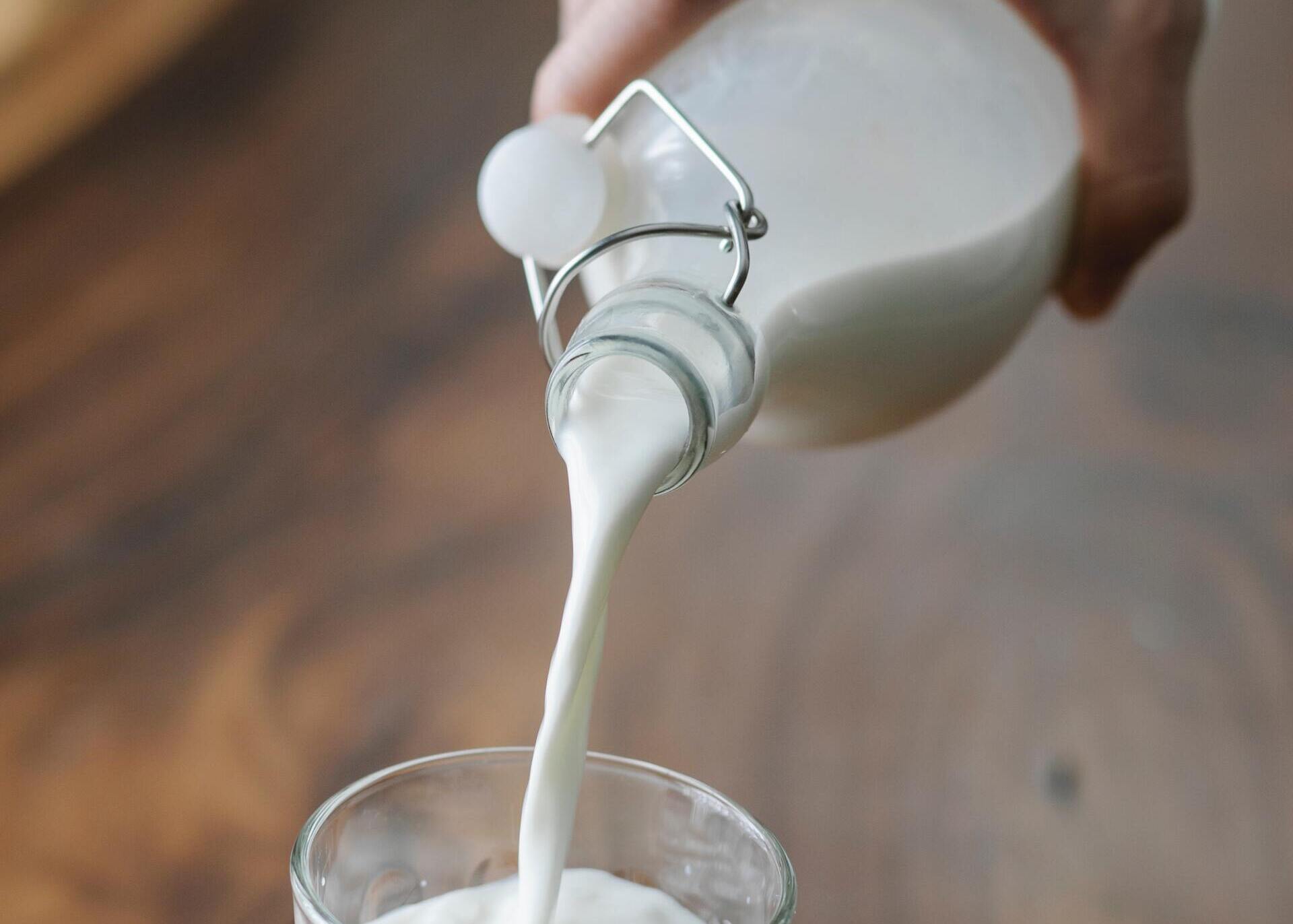Making lattes at home does not require you to buy countless pieces of expensive equipment, like an espresso maker or a special milk frother. You can prepare a delicious homemade latte that will save you a few bucks and taste worlds better than plain, regular coffee. The best part is that preparing a latte is not difficult either. All you will need is cold milk and some strong-brewed coffee. That’s right, no fancy gadgets are required! So, read on to learn how to make a latte without an espresso machine!
What is a latte?
The term caffè latte (or caffè e latte) originated in Italy, which means “coffee and milk.” Some sources say Italians created it as a weaker version of cappuccino to accommodate the taste of foreign travelers at the end of the 19th century. This velvety texture drink has become popular worldwide. It is usually consumed hot and considered a perfect breakfast drink that pairs well with most breakfast food.
Caffè latte is traditionally made of one part of espresso and two parts of steamed milk. It typically has a thin layer of foam on top, and, depending on the barista’s skills, a drawing is created by pouring the milk. Because of latte art, it is safe to say that cafe latte is the most instagrammable coffee. From simple love hearts and rosettas to sea horses, teddy bears, and kittens drawn on the foam, it can put a smile on your face and make your day.
As a coffee shop treat, sometimes you can get a flavored latte with syrup, such as French vanilla, caramel, rose, or even pumpkin spice, depending on the season. It sweetens the coffee and takes away from the bitterness of the espresso.
How to make a latte without an espresso machine
Depending on the regular coffee-making gadgets and household items available, there are several ways to substitute for espresso without an espresso machine. You can also easily create frothed milk without a frothing wand or handheld frother.
Keep reading to find out which recipe works best, and start brewing! The steps are simple and easy to follow too.

Making espresso
Espresso is used as a base for many coffee drinks. But, owning an espresso machine is not the only way to make a latte at home. There are, in fact, some alternatives for espresso, which will allow you to prepare and enjoy your perfect coffee drink.
How to make strong coffee in a cup
The first and easiest method is to use strong coffee brewed in a cup. All you will need is a cup, mug, and ground coffee. Pour a small amount of hot water over your coffee grounds and let it steep for four minutes. Do not stir or mix it while it is brewing! The coffee crust on top will help the coffee absorb the maximum flavor needed for your latte.
After approximately four minutes, push the coffee grounds with a spoon towards the back of the cup and remove the floating coffee grounds using the second spoon. This concentrated coffee can be used for milk-based coffee drinks and coffee-flavored desserts, such as Tiramisu.
How to make espresso with a Moka Pot
Moka Pot is often referred to as a stovetop espresso maker. It is a relatively inexpensive and convenient way of brewing strong coffee at home. While the Moka Pot does not reach the high pressure that espresso machines do, the coffee produced is strong enough to use as a base for a latte or flat white.
Use dark roast coffee to brew your espresso with a Moka Pot. If you grind the beans yourself, you can use the filter basket as a measuring cup to determine how much beans you need.
Grind the beans using a medium-fine setting. The coffee should be finer than the pour-over but not as fine as the espresso grind.
Once your ground coffee is ready, fill the filter basket and gently flatten the surface. Don’t press or tamper the coffee grounds, as this may clog the filter and prevent the extraction of coffee.
Fill the bottom chamber of the Moka Pot with hot water. It will speed up the brewing time and produce a smoother coffee flavor. Next, insert the filter basket and screw the brewing chamber on.
Place the Moka Pot on the stove on medium heat and wait until the brew is complete. Depending on the Moka Pot size, it should take around 5 minutes.

How to make espresso with an AeroPress
An AeroPress can make brewing an espresso-like coffee extremely easy due to the simplicity of the mechanism. This coffee-brewing gadget consists of a brewing chamber, a plunger, and a filter cap.
The AeroPress uses physical pressure to extract the maximum flavor from the coffee grounds. The amount of pressure it can generate makes this process very quick, which is another reason to make your espresso with an AeroPress.
To make your coffee base, place the AeroPress over a mug. Then, line your filter cap with a paper filter and ground coffee. Next, pour in boiling water and press down with the plunger. Then, you will have the espresso waiting for you in your cup!
While standard AeroPress configuration using paper filters won’t get you the same result as an espresso machine in terms of crema and coffee thickness, you can buy the Fellow Prismo attachment, which will help to build up more pressure when brewing coffee and bring the result closer to real espresso coffee.
Fellow Prismo Attachment for AeroPress
Prismo is a pressure-actuated valve designed to attach to an AeroPress Coffee Maker to craft espresso-style coffees. It creates a no-drip seal for full immersion brews. The special valve stays sealed until you press down and creates a build-up of pressure to brew coffee with a consistency closer to espresso.
There are, of course, some strengths and weaknesses of using an AeroPress espresso for your latte recipe. One of the biggest AeroPress advantages is the ease of brewing. Many coffee gadgets take time and experimentation, but you should get a fairly consistent brew every time with this method.
Secondly, AeroPress is one of the most convenient coffee gadgets on the market. It is portable, does not require electricity, and can easily be cleaned. These factors make AeroPress an excellent gadget for making an espresso alternative at home.
However, an AeroPress may fall a little short for several reasons. Primarily, you will not get a thick espresso, especially when you compare the strength to one made with an espresso machine or a manual espresso maker. Also, it will not produce that golden crema that espresso machines do. Therefore, making latte art at home will be pretty hard or nearly impossible. Furthermore, if you grind your coffee too fine, you may struggle to get the water through and balance the flavor properly.

How to make espresso with Hario V60
The pour-over coffee maker is probably not the first thing that comes to mind when you think of brewing methods to make strong coffee. While pour-over coffee does not have the thickness of Moka Pot or AeroPress coffee, you can still utilize it for making strong coffee at home.
The trick with pour-over espresso is adjusting the coffee-to-water ratio and pouring water slower than you normally would, so it extracts as much coffee flavor as possible. Check out my pour-over espresso recipe and tips on how to perfect it.
Milk steaming and frothing
Now that we have got the espresso part out of the way, let’s explore the options of frothing milk for your latte!
Two ways of warming milk for coffee are using steam and heating it. How it is frothed can significantly impact the texture and flavor of your drink. You can use almost any milk for your lattes, including whole, skim, or non-dairy milk.
However, you will get the creamiest and best-looking coffee with full-fat milk. When heating, you must incorporate air into the milk. This will produce milk foam and give it a creamy and silky texture. Failing to integrate air can lead to a flat and ultimately uninspiring coffee. Therefore, aerating heated milk should be your top priority to get the best result.
What’s the difference between steamed milk and frothed milk?
The frothed milk generally results from the aeration of the heated milk. Frothed milk will have more volume because more air is introduced into it. The more milk foam, the lighter the coffee will be.
On the other hand, steamed milk involves a little less aeration. This leaves you with a silky and creamy texture. You will want steamed milk in the center of the cup and a little frothed milk on top for a great cafe au lait.
Steaming the milk
Traditionally, baristas use a steam wand to prepare steamed milk. This allows for even heating, resulting in a great coffee. When making a latte at home, you have two primary options. Firstly, you can use a microwave to heat your milk. Measure your milk and heat it in the microwave for a few minutes until hot enough to drink.
This method is straightforward, convenient, and great if you are moving or in a rush. However, you will have little control over your milk if you use a microwave. This is because you’ll have no specific temperature and just a mere guess! This could lead to the burning of milk, or under-heated milk, which will significantly affect the flavor of your coffee drink.
The second method is to use a stove. Use a small saucepan and warm milk over low heat. This method will take a lot longer and require much more of your attention. It will also leave you with much more cleaning, and if you spill hot milk, it will not smell pleasant! However, you will get much better milk, much more consistently, with this method. So, if you have the time, consider this method over the former, as you will be rewarded with a much better brew.
Frothing the milk
You do not need a fancy steam wand or expensive milk frother to make perfectly steamed milk. There are dozens of kitchen items that you can turn into a milk frother.
The first method is to use a simple kitchen whisk to froth milk. If you have a small, handheld one, this can create beautifully frothed milk. Next, pour heated milk into a bowl and whisk until you have the desired consistency. A whisk is a great tool because it incorporates air into the ingredients. This method is straightforward and inexpensive but will leave you with a nice froth.
If you find whisking milk a bit of a chore, then using a French Press coffee plunger might appeal more. Frothing your milk with a French Press is a straightforward, two-step process. Firstly, make sure your milk is heated. Next, pour the milk into the French Press and push down the plunger. Repeat this a few times, and your frothy milk will double in volume.
French Press is an excellent tool for milk preparation for your latte, as you will receive beautifully frothed milk without large undesired bubbles.

Combine coffee and milk
Once you have your espresso ready and your milk steamed, it is time to combine the ingredients and make a perfect latte. First, pour the espresso into a shallow cup, introducing your steamed milk into it.
If you decide to take your home barista skills to the next level, some milk-pouring techniques will allow you to create beautiful latte art. You will need a small jug or a metal pitcher to achieve this. Pitchers are inexpensive, but they make a huge difference when pouring frothed milk, as you’ll gain much more control over your pour.
To make a latte heart:
- Pour your warm milk into the espresso in a circular motion. This will bring the crema, or ‘golden’ part of the espresso, to the top of the cup.
- When the cup is two-thirds filled with milk and coffee mixture, tilt it and start to pour into the center of the cup. This will create a small white circle.
- Bring your pitcher up and pour through this circle to create a heart when the cup is almost full.
To create a latte leaf:
- Pour milk into the espresso in a circular motion.
- When the cup is one-third filled, tilt it and start to wiggle your pitcher. This will create the bottom of the leaf.
- When the cup is almost full, pull up and drag through. You will impress both yourself and your friends!
How do I add flavor to a latte?
If you think your coffee lacks something, there are hundreds, if not thousands, of ways to add flavor to a latte. Firstly, you can change the strength of your coffee. Strongly brewed coffee will make your latte taste more bitter and add more depth. Alternatively, if you want a creamier coffee, add more milk foam.
Many different coffee syrups can also add flavor to your latte. The most popular flavors include vanilla, caramel, hazelnut, Irish cream, and marshmallow. You can pick up a couple of these from a supermarket or order online and experiment to achieve the most enjoyable result.
These days some of the syrups are also sugar-free, meaning you can enjoy a good latte without worrying about the nutrition calories.
Add almond extract to your coffee mug for a great flavored latte before pouring. This will give you a nice nutty undertone to your coffee.
If you prefer more natural ingredients or something you can find in your pantry, sprinkle some cinnamon or cardamom powder on top of the milk froth.
You can also sprinkle some cocoa powder on your latte. While traditionally used for cappuccinos, the cocoa powder will give your latte a rich chocolatey undertone and a new depth. And if you feel extra fancy (or want to impress someone), grate some dark chocolate over the top.
It does not take a skilled barista to create a tasty latte at home. Brew some strong coffee, steam the milk, and you are pretty much there! Practice always makes perfect, so if you fail at first, try again! Soon you will make a delicious latte every day, saving yourself a lot of time and even more money. So now that you have learned to make a latte without an espresso machine, put the kettle on and apply those newly acquired home barista skills!


